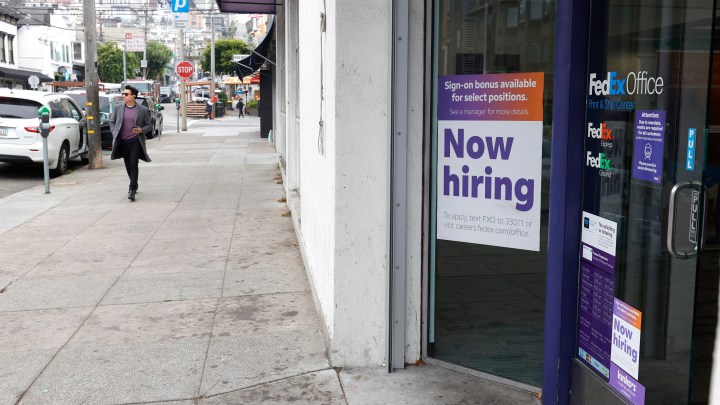
While still a long way from pre-pandemic days, the job market’s making progress
While still a long way from pre-pandemic days, the job market’s making progress

We got some seemingly good labor market news Thursday: 293,000 people filed initial unemployment claims last week — down more than 10% from the week prior. It’s the first week of fewer than 300,000 initial unemployment claims since March 14, 2020.
The number of people getting unemployment checks every week, continuing claims, was also down to 2.5 million. Those numbers have been trending down for the past few weeks, after going up for a while in September with the delta surge.
What does that tell us about the job market and the economy, big-picture?
The weekly jobless claims numbers tell us in near-real time — like last week — how many people lost their jobs. At the beginning of the pandemic, that was millions of workers every week. Early this year, it was still 700,000 to 800,000. Now, it’s under 300,000.
“The good news is, new claims have really now tip-toed closer to pre-pandemic levels,” said Mark Hamrick at Bankrate.com. “Fresh job loss — while obviously potentially devastating for individuals and families — is not the key issue for the economy right now.”
What is key is getting unemployed people, and those who’ve left the workforce in the pandemic, back to work. In the last few weeks, more than 150,000 workers have gotten off the unemployment rolls.
The waning delta wave is playing a large role, said Betsey Stevenson at the University of Michigan.
“They’re more comfortable going back to jobs because now there’s a vaccine mandate, or there’s not as many cases in their community. It could be that employers are getting a little bit better with the offers that they’re giving workers,” she said.
Declining first-time and continuing unemployment claims tell the same story here, according to economist Bill Rodgers, director of the St. Louis Fed’s Institute for Economic Equity.
“The nexus of power has shifted from employers to workers. And they’re responding to the fact that Target or other companies have been — in the past few years or so — have been raising their wages,” Rodgers said.
Now, keep in mind that first-time weekly jobless claims — new layoffs — are still about 90,000 higher than before the pandemic, and nearly 2 million more workers are collecting weekly unemployment checks.
We’re making progress, but there’s still a long way to go.
There’s a lot happening in the world. Through it all, Marketplace is here for you.
You rely on Marketplace to break down the world’s events and tell you how it affects you in a fact-based, approachable way. We rely on your financial support to keep making that possible.
Your donation today powers the independent journalism that you rely on. For just $5/month, you can help sustain Marketplace so we can keep reporting on the things that matter to you.












